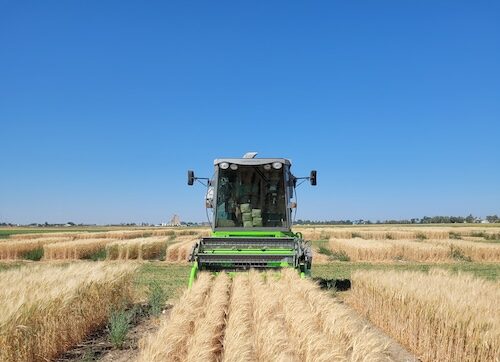| |
| |
 |
 |
| |
 |
|
@{mv_date_MMM d, yyyy}@ |
| |
|
| |
While you're probably in the midst of seeding, we're in the midst of planning our upcoming Top Crop Manager magazine print issues for the coming year. What topics would you like to see? Give me a call or send me a text with your ideas.
- Kaitlin Berger, west editor
|
|
| |
|
| |
 With the appointment of a new federal cabinet for Canada, various agriculture groups have welcomed the new body along with their heed for protection of the agriculture sector.
» Read More...
With the appointment of a new federal cabinet for Canada, various agriculture groups have welcomed the new body along with their heed for protection of the agriculture sector.
» Read More...
Two Canadian organizations - Viterra and Canadian Foodgrains Banks - commemorate ten consecutive years of working together to reduce global hunger through a land donation program.
» Read More...
A new partnership between Port of Johnstown and V6 Agronomy has been established to strengthen the flow of crop nutrition products across Canada.
» Read more...
As of May 2025, according to Meghan Vankosky on the Prairie Pest Monitoring Network, spotted lanternfly is not established in Canada.
» Read more...
|
| |

|

|
| |
|
| |

Healthy plants are more productive. They produce better quality and higher yields, making plant health the ultimate return on investment for farmers. But what does plant health really mean, and how does it translate to a better bottom line?
Thanks to extensive research from the Syngenta development teams around the world, we’ve got answers that are founded in scientific data to explain why plants treated with ADEPIDYN ® and Solatenol ® are greener, healthier and deliver more yield.
» Read more
|
| |
|
| |
 Group 14 herbicide-resistant kochia was confirmed in 2021 from a Saskatchewan sample submitted to Agriculture and Agri-Food Canada’s Prairie Resistance Research Lab at Lethbridge, Alta. If Group 14 resistance becomes common on the Prairies, the foundation of herbicide-resistant kochia control will crumble. As much as integrated weed management (IWM) is an often-used term and, perhaps seldom utilized, IWM is crucial to combatting this problem.
» Read more...
Group 14 herbicide-resistant kochia was confirmed in 2021 from a Saskatchewan sample submitted to Agriculture and Agri-Food Canada’s Prairie Resistance Research Lab at Lethbridge, Alta. If Group 14 resistance becomes common on the Prairies, the foundation of herbicide-resistant kochia control will crumble. As much as integrated weed management (IWM) is an often-used term and, perhaps seldom utilized, IWM is crucial to combatting this problem.
» Read more... |
| |
 Two recent research experiments indicated that ultra-early planting of durum has no detrimental effect on Canada Western Amber Durum (CWAD) grain yield in western Canadian growing environments. Planting durum wheat as early as when the top two-inch soil temperatures are between 2 and 6 C consistently resulted in high and often stable grain yield, regardless of variety.
» Read More...
Two recent research experiments indicated that ultra-early planting of durum has no detrimental effect on Canada Western Amber Durum (CWAD) grain yield in western Canadian growing environments. Planting durum wheat as early as when the top two-inch soil temperatures are between 2 and 6 C consistently resulted in high and often stable grain yield, regardless of variety.
» Read More... |
| |
| |

|

|
| |
|
| |
|
|
| |
| |










